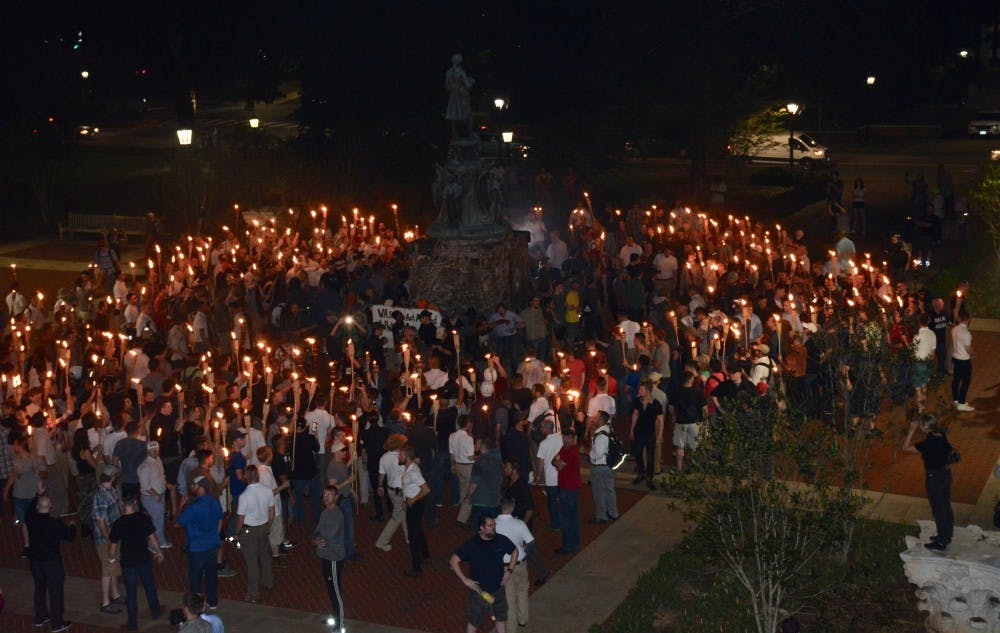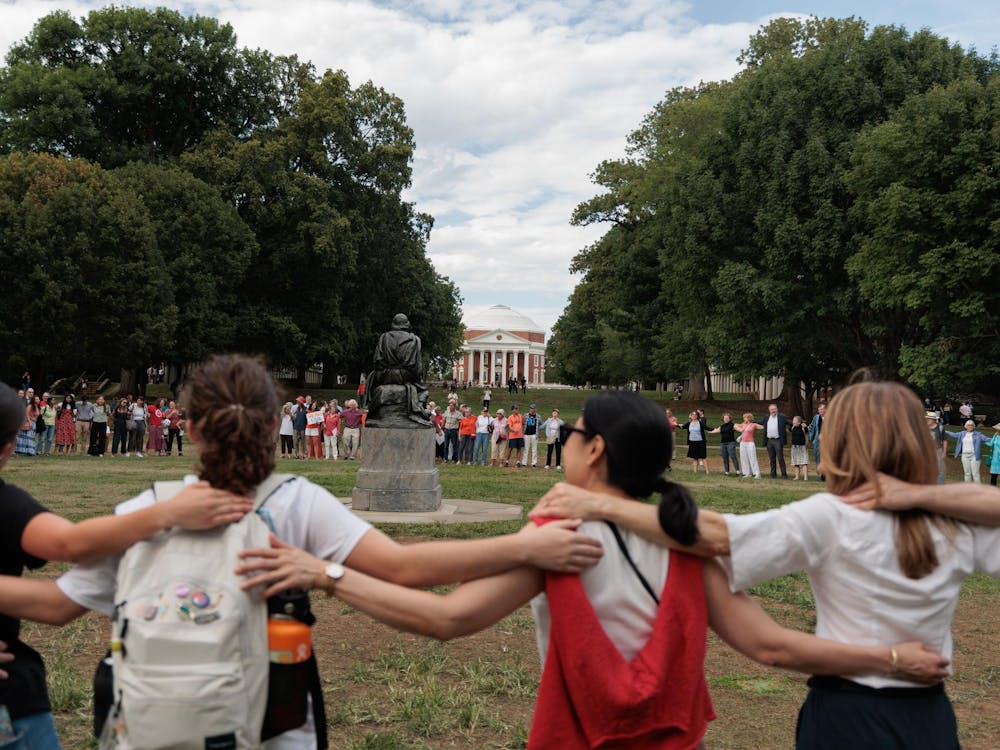An independent review released last Friday strongly criticized the University Police Department for failing to collaborate with other law enforcement agencies and adequately respond to the white nationalist torchlit march through Grounds Aug. 11, describing the response as “woefully inadequate.”
“University officials were aware of this event for hours before it began but took no action to enforce separation between groups or otherwise prevent violence,” reads the the independent review of white nationalist protests that took place in the city this past summer. “They were unprepared when hundreds of white nationalists walked through the University grounds and surrounded a small group of counter-protesters at the base of a statue of Thomas Jefferson next to the Rotunda.”
The city government commissioned the 220-page report from former U.S. Attorney Tim Heaphy and a team of lawyers at the firm Hunton & Williams. The review looks at how local and state officials responded to white nationalist events in Charlottesville this past summer.
In the section of the report dealing with the Aug. 11 white nationalist torchlit march at the University, it criticizes University Police Chief Michael Gibson for failing to create a “comprehensive plan” to keep white nationalists and counter-protesters separate that evening.
The march turned violent when groups clashed near the statue of Thomas Jefferson north of the Rotunda, leading to physical altercations and the use of pepper spray.
The report takes note of the “Mutual Aid Agreement between the City of Charlottesville, Albemarle County and the University,” which states University police must formally ask for support from CPD.
“Unfortunately, by the time UPD requested assistance, many of the disorders around the Jefferson statue were over and the participants were either dazed or fleeing,” the report states.
The team that wrote the report also criticized what it believed to be Gibson’s failure to coordinate with Charlottesville or Virginia State Police or Emergency Services in the hours leading up to the event led to a “fragmented and disorganized response” that night.
“Despite ample warning that a large group would march on Grounds with torches and confront counter-protesters, UPD failed to take proactive steps to prevent violence. They did not attempt to separate the marchers from those that came to confront them. They did not station any uniformed officers near the statue, even after a confrontation was obvious. Most importantly, they failed to accept multiple offers of assistance from CPD officers who were staged immediately across the street,” the report reads.
While the report notes Gibson “doubled the number of [University Police] officers on duty” and placed some officers at the Rotunda, it says he failed “to coordinate a unified response” with Charlottesville and Virginia State Police and Emergency Services.
“UPD waited for violence to occur before requesting such assistance. Even then, they were disorganized and unfamiliar with the process of declaring an unlawful assembly. Their response to the Friday night torchlight event was woefully inadequate, even for a small campus police department,” the report stated.
The report also criticized the lack of a notification from the University to the community on the evening of Aug. 11.
“Neither Chief Gibson nor anyone else sent any notification about the pending event to the University community,” the report said. “Body camera footage from later that evening shows pedestrians, including one female in an evening gown, walking across the Lawn shortly after the march. The failure to distribute timely information to the University community exposed bystanders and raised the prospect of their unforeseen exposure to a contentious demonstration.”
The University’s alert system has since become a topic of debate among the student body, with some saying that the community should be notified when white nationalist groups stage rallies, which also happened again in October.
Dubbing the University Police’s response on Aug. 11 “police passivity,” the report states, that “it also seems likely that the insufficient police response on Friday night emboldened people
who intended to engage in similar acts of violence on Saturday.”
After the release of the report, the University issued a statement, saying it “has acknowledged that its response to the horrific and unprecedented events in August should have been better” and it has “taken immediate steps to make UVA and the surrounding areas safer.”
These steps include the formation of the Deans Working Group, expanding the Ambassador program and implementing new security measures for major events.
Gibson did not return an email request for comment on the report.
In an interview with The Cavalier Daily last Friday, University President Teresa Sullivan responded to critiques of the University’s response in August, while acknowledging that she had not yet read the full city report at the time of the interview — which took place just a few hours after the report was released.
“I think all of us could have done better, if we had known what was going to happen,” Sullivan said. “Obviously, if we had had perfect knowledge of this, we would have designed things differently. And I do think that if there is a next time — and I hope there won’t be — but if there is a next time, I think you’ll see a rather different response from us.”
Emails recently publicized by the Chronicle of Higher Education have shown that University Police received word about the possibility of a torchlit march as early as Aug. 8.
Sullivan has previously said she found out about the march on the evening of Aug. 11, but records have shown she sent an email to members of the Board of Visitors on Aug. 9 noting the possibility of white nationalists coming to the University in conjunction with the Unite the Right rally planned for Aug. 12.
Sullivan told The Cavalier Daily the University’s response would be improved, should another rally take place. ‘Unite the Right’ organizer Jason Kessler has applied for a permit to hold another rally next August.
“We are discussing with members of our Law faculty who have expertise in this area, additional time, place, manner regulations for the University. Right now we’ve got very little in the way of time, place, manner regulations. But a number of those regulations have been upheld in this Fourth Circuit, where we’re located. So we’re reviewing that to see what would make sense for us to do,” Sullivan said.







